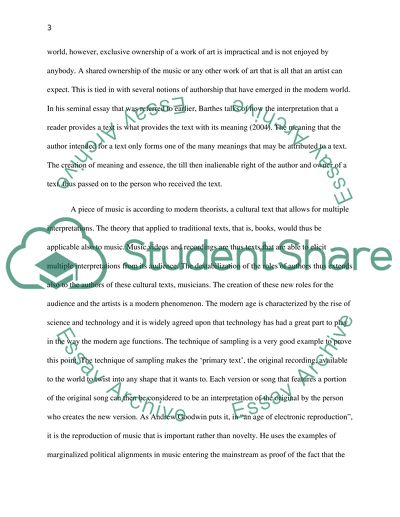Cite this document
(“The Technique of Sampling in Music and Notions of Authorship Essay”, n.d.)
Retrieved from https://studentshare.org/journalism-communication/1441070-with-reference-to-the-technique-of-sampling
Retrieved from https://studentshare.org/journalism-communication/1441070-with-reference-to-the-technique-of-sampling
(The Technique of Sampling in Music and Notions of Authorship Essay)
https://studentshare.org/journalism-communication/1441070-with-reference-to-the-technique-of-sampling.
https://studentshare.org/journalism-communication/1441070-with-reference-to-the-technique-of-sampling.
“The Technique of Sampling in Music and Notions of Authorship Essay”, n.d. https://studentshare.org/journalism-communication/1441070-with-reference-to-the-technique-of-sampling.


